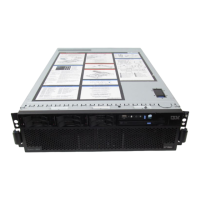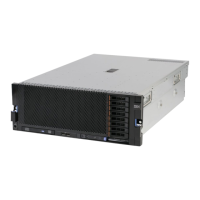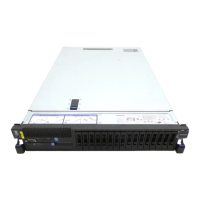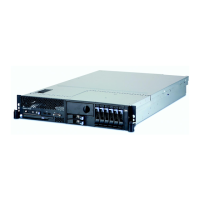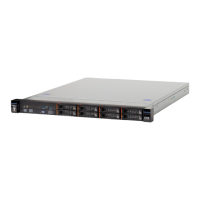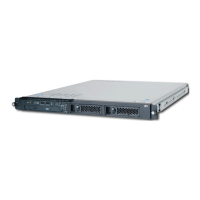Memory problems
v Follow the suggested actions in the order in which they are listed in the Action column until the problem
is solved.
v See Chapter 3, “Parts listing, Type 8864,” on page 23 to determine which components are customer
replaceable units (CRU) and which components are field replaceable units (FRU).
v If an action step is preceded by “(Trained service technician only)”, that step must be performed only by a
trained service technician.
Symptom Action
The amount of system memory
that is displayed is less than the
amount of installed physical
memory.
Note: If you change the memory, you must updated the memory configuration in
the Configuration/Setup Utility program.
1. Make sure that:
v No error LEDs are lit on the operator information panel or on the memory
card.
v Memory mirroring does not account for the discrepancy.
v The memory modules are seated correctly.
v You have installed the correct type of memory.
v All banks of memory are enabled. The server might have automatically
disabled a memory bank when it detected a problem, or a memory bank
might have been manually disabled.
2.
Check the POST error log for error message 289:
v If a DIMM was disabled by a system-management interrupt (SMI), replace
the DIMM.
v If a DIMM was disabled by the user or by POST, run the Configuration/Setup
Utility program and enable the DIMM.
3.
Run memory diagnostics (see “Running the on-board diagnostic programs” on
page 111).
4. Make sure there is no memory mismatch when the server is at the minimum
memory configuration (two 1GB DIMMs; see “Minimum configuration” on page
156).
5. Add one pair of DIMMs at a time, making sure the DIMMs match for each pair
added.
6. Add one memory card at a time, making sure the memory matches for each
card added.
7. Reseat the following components:
a. DIMM
b. Memory card
8.
Replace the components listed in step 7 one at a time, in the order shown,
restarting the server each time.
Chapter 5. Diagnostics 93
